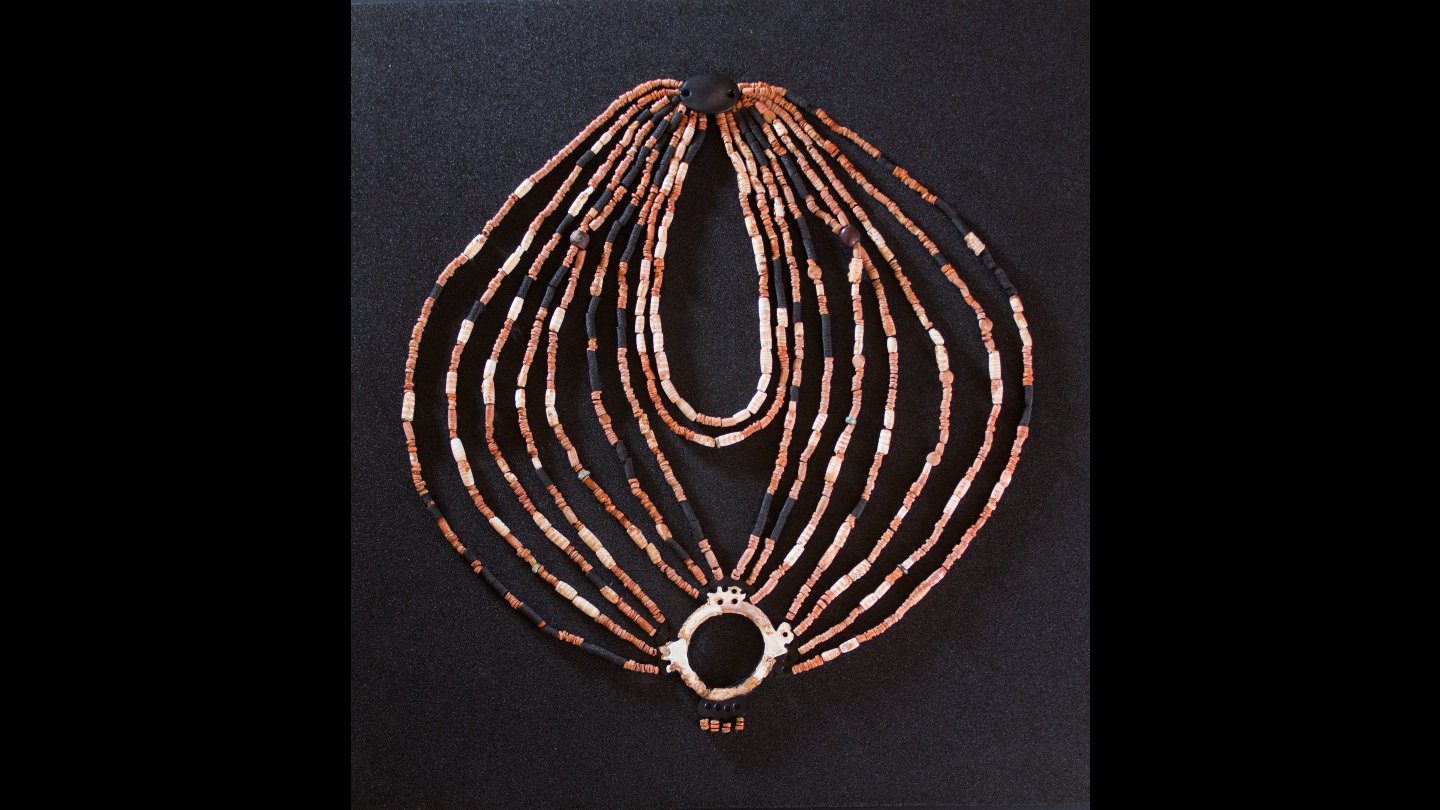According to researchers, a Middle Eastern child who was buried in a stone-lined grave approximately 9,000 years ago was found wearing a complex necklace, highlighting the intricacies of social life in an early farming community.
Alarashi, from the Spanish National Research Council in Barcelona, states, “This impressive necklace was intended to be buried with a child of significant social status. However, we are unsure why this particular child was considered special.”
The necklace was crafted using stones and shells that were imported from various parts of the Middle East. Notably, it contains two amber beads, which are the oldest ones discovered thus far.
When the child’s grave was excavated in 2018 at a site called Ba’ja in southern Jordan, the intricate necklace had already come apart. No strings or cords were preserved. To reconstruct the ornament, Alarashi and colleagues analyzed the distribution of beads on the child’s skeletal remains. They used microscopic differences in the wear intensity of the beads’ openings to determine the position of each bead in strung rows. By comparing the partially preserved ring to similar objects previously found at Ba’ja, the researchers were able to estimate the number of necklace cords it could have held.
2023-08-02 13:00:00
Source from www.sciencenews.org
